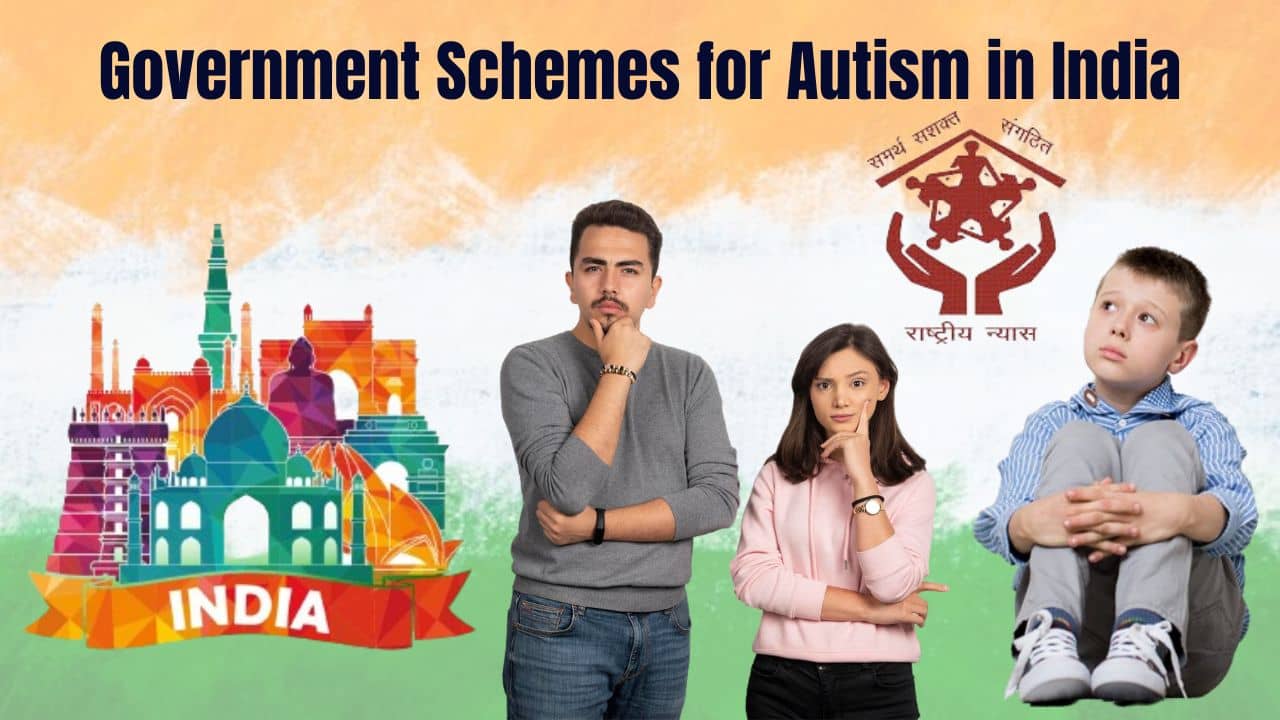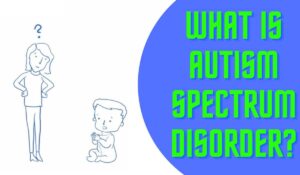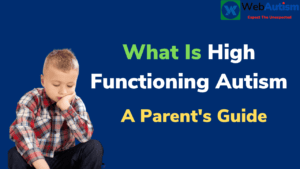Autism Spectrum Disorder (ASD) affects millions of individuals and their families worldwide. In India, the government has recognized the need for supportive measures to assist autistic individuals and their families in leading fulfilling lives. Through various schemes and initiatives, the government aims to provide financial support, education, healthcare, and vocational training. This comprehensive guide explores the government schemes for autism in India and the benefits they offer.
Key Government Schemes for Autism in India
1. National Trust Act
The National Trust Act was established in 1999 to provide legal protection and promote the welfare of persons with autism, cerebral palsy, mental retardation, and multiple disabilities. The act aims to empower individuals with autism and their families through various schemes:
1. NIRAMAYA Health Insurance Scheme
The NIRAMAYA Health Insurance Scheme is a pioneering initiative under the National Trust Act designed to provide affordable health insurance to individuals with disabilities, including autism. This scheme aims to alleviate the financial burden of medical expenses, ensuring that individuals with autism receive the necessary healthcare services. Here’s a detailed guide on the NIRAMAYA Health Insurance Scheme, including how to apply, the process, eligibility criteria, benefits, and other essential details.
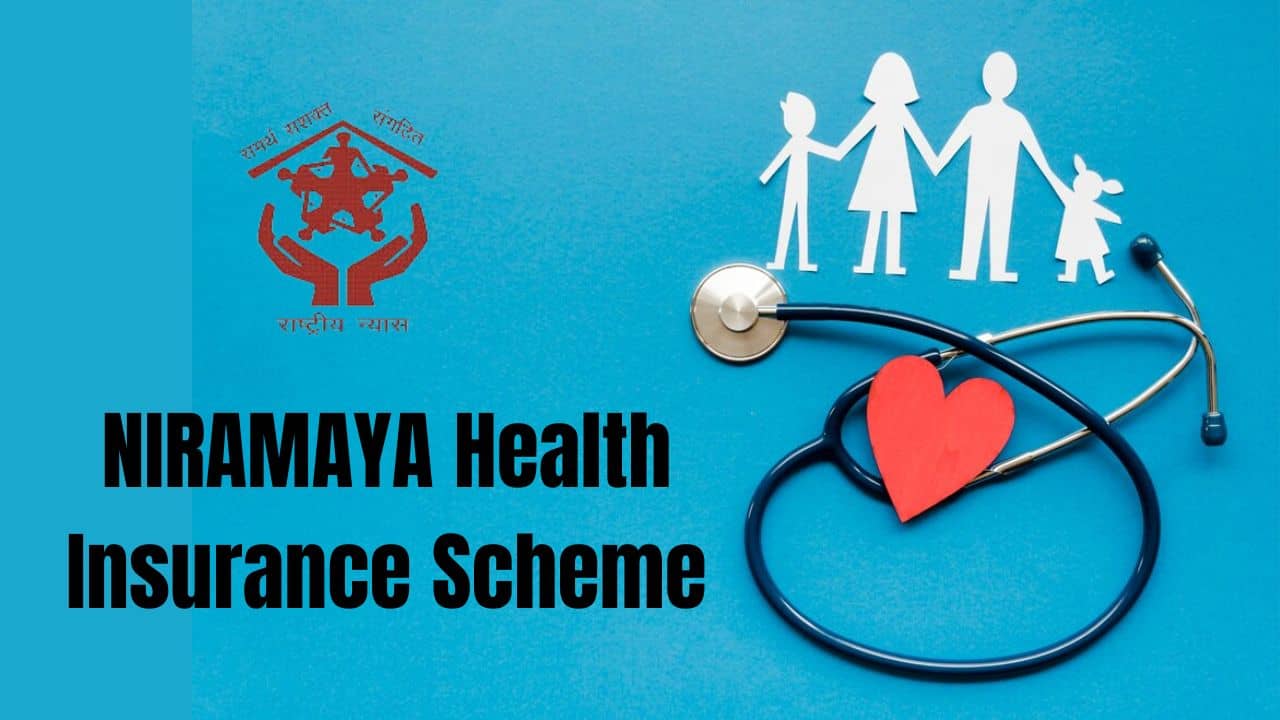
How to Get the NIRAMAYA Health Insurance Scheme
1. Application Process:
- Online Application: Applicants can apply online through the official website of the National Trust.
- Offline Application: Forms can be obtained from registered organizations under the National Trust or from local offices. These forms need to be filled out and submitted along with the required documents.
2. Required Documents:
- Disability Certificate: A disability certificate issued by a competent medical authority.
- Proof of Identity: Aadhaar card, Voter ID, or any other government-issued identity proof.
- Proof of Age: Birth certificate, school certificate, or any other document proving age.
- Recent Photograph: Passport-sized photograph of the beneficiary.
3. Submission:
Submit the completed application form along with the required documents to the nearest registered organization or directly to the National Trust.
Eligibility Criteria
To be eligible for the NIRAMAYA Health Insurance Scheme, the following criteria must be met:
- Disability Type: The scheme is available for individuals with autism, cerebral palsy, mental retardation, and multiple disabilities.
- Age Limit: There is no specific age limit; individuals of all ages with the mentioned disabilities are eligible.
- Residency: The applicant must be a citizen of India.
Benefits of the NIRAMAYA Health Insurance Scheme
- Comprehensive Health Coverage:
- Medical Treatments: Coverage for hospitalization expenses, including room rent, ICU charges, and medical procedures.
- Surgeries: Coverage for both major and minor surgeries.
- Therapies: Expenses for therapies such as occupational, speech, and physiotherapy are covered.
- Medical Tests: Diagnostic tests and laboratory examinations are included.
Financial Assistance:
- Coverage Limit: Up to INR 1 lakh per annum for medical expenses.
- No Premium for Below Poverty Line (BPL) Families: BPL families can avail of this scheme without paying any premium.
3. Easy Access to Healthcare:
- Network Hospitals: Access to a wide network of empaneled hospitals and healthcare providers across India.
- Cashless Treatment: Provision for cashless treatment in network hospitals, reducing out-of-pocket expenses.
4. Pre-existing Conditions Covered:
The scheme covers pre-existing medical conditions, ensuring that individuals with chronic health issues receive the necessary care without financial strain.
Additional Information
1. Renewal Process:
The NIRAMAYA Health Insurance Scheme is an annual scheme. Beneficiaries need to renew their membership every year by submitting a renewal form along with updated documents if required.
2. Grievance Redressal:
Beneficiaries can contact the National Trust or the insurance provider for any grievances or issues related to the scheme. A dedicated helpline and email support are available for assistance.
3. Awareness and Outreach:
The National Trust, in collaboration with various NGOs and registered organizations, conducts awareness programs to educate families about the scheme and assist them in the application process.
The NIRAMAYA Health Insurance Scheme is a crucial lifeline for individuals with autism and other disabilities, providing them with the necessary financial support to access quality healthcare services. By offering comprehensive coverage, including medical treatments, therapies, and surgeries, the scheme ensures that beneficiaries receive holistic care without the burden of exorbitant medical costs.
For more information or to apply for the NIRAMAYA Health Insurance Scheme, visit the National Trust’s official website or contact your nearest registered organization.
2. GHARAUNDA (Group Home and Rehabilitation Activities Under National Trust Act for Disabled Adults)
The GHARAUNDA scheme, part of the National Trust Act, aims to provide affordable housing and rehabilitation services to adults with disabilities, including autism, cerebral palsy, mental retardation, and multiple disabilities. This initiative supports independent living while ensuring that individuals receive necessary care and rehabilitation services. Here’s an in-depth look at how to access this scheme, the application process, eligibility criteria, benefits, and more.
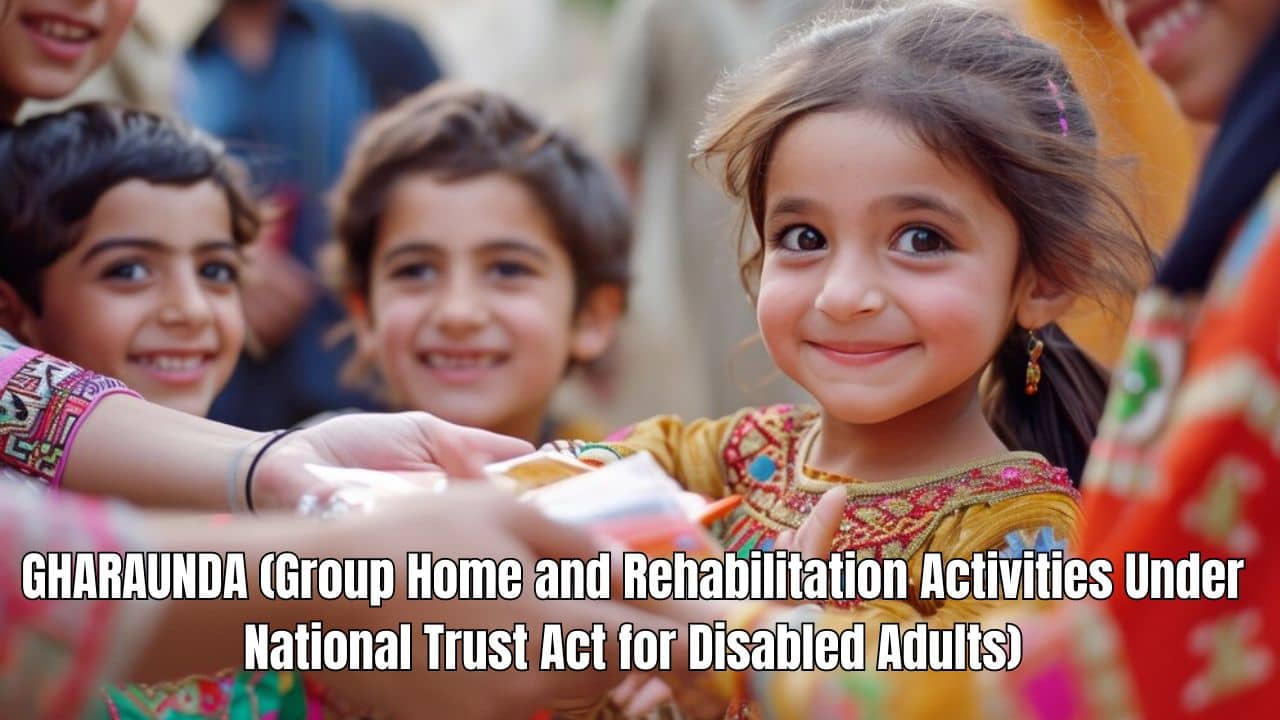
How to Get the GHARAUNDA Scheme
1. Application Process:
- Online Application: Interested applicants can apply online through the official website of the National Trust.
- Offline Application: Application forms can be obtained from registered organizations under the National Trust or local offices. These forms need to be filled out and submitted along with the required documents.
2. Required Documents:
- Disability Certificate: A certificate issued by a competent medical authority verifying the disability.
- Proof of Identity: Aadhaar card, Voter ID, or any other government-issued identity proof.
- Proof of Age: Birth certificate, school certificate, or any other document proving the age of the beneficiary.
- Recent Photograph: Passport-sized photograph of the beneficiary.
3. Submission:
Submit the completed application form along with the required documents to the nearest registered organization or directly to the National Trust.
Eligibility Criteria
To be eligible for the GHARAUNDA scheme, the following criteria must be met:
- Disability Type: The scheme is available for individuals with autism, cerebral palsy, mental retardation, and multiple disabilities.
- Age Limit: The applicant must be an adult, typically above 18 years of age.
- Residency: The applicant must be a citizen of India.
Benefits of the GHARAUNDA Scheme
1. Residential Facilities:
- Group Homes: Provision of affordable group homes where individuals with disabilities can live independently yet receive the necessary support.
- Safe Environment: Homes are equipped with safety measures to ensure a secure living environment for all residents.
2. Rehabilitative Care:
- Daily Living Support: Assistance with daily living activities such as bathing, dressing, and eating.
- Therapies and Activities: Access to a range of rehabilitative therapies, including physical therapy, occupational therapy, and recreational activities to enhance quality of life.
3. Professional Care:
- Trained Staff: Availability of trained caregivers and medical staff to provide round-the-clock support and care.
- Personalized Care Plans: Individualized care plans tailored to meet the specific needs and preferences of each resident.
4. Social Integration:
- Community Interaction: Opportunities for social interaction and community engagement, promoting social skills and reducing isolation.
- Skill Development: Programs focused on developing vocational and life skills, aiding in the personal and professional growth of residents.
5. Financial Assistance:
- Subsidized Costs: The cost of housing and care is subsidized, making it affordable for families from various economic backgrounds.
- Additional Funding: Potential for additional funding or support from state governments or other charitable organizations.
Additional Information
1. Renewal Process:
The GHARAUNDA scheme requires periodic renewal to ensure continued eligibility and to update any changes in the resident’s condition or needs. Renewal forms are available through the National Trust or registered organizations.
2. Grievance Redressal:
Beneficiaries or their families can contact the National Trust or the respective registered organization for any grievances or issues related to the scheme. A dedicated helpline and email support are available for assistance.
3. Awareness and Outreach:
The National Trust, in collaboration with various NGOs and registered organizations, conducts awareness programs to educate families about the scheme and assist them in the application process.
The GHARAUNDA scheme is a vital initiative under the National Trust Act, offering comprehensive residential and rehabilitative care for adults with disabilities, including autism. By providing safe and affordable housing, professional care, and opportunities for social integration and skill development, the scheme ensures that individuals can lead dignified and independent lives.
For more information or to apply for the GHARAUNDA scheme, visit the National Trust’s official website or contact your nearest registered organization.
3. SAMARTH (Respite Care Scheme)
The SAMARTH Respite Care Scheme, under the National Trust Act, is designed to provide short-term residential care for individuals with disabilities, including autism, cerebral palsy, mental retardation, and multiple disabilities. This scheme offers temporary relief to caregivers by ensuring that individuals with disabilities receive professional care in a safe and nurturing environment. Here’s a detailed guide on how to access this scheme, the application process, eligibility criteria, benefits, and other essential details.
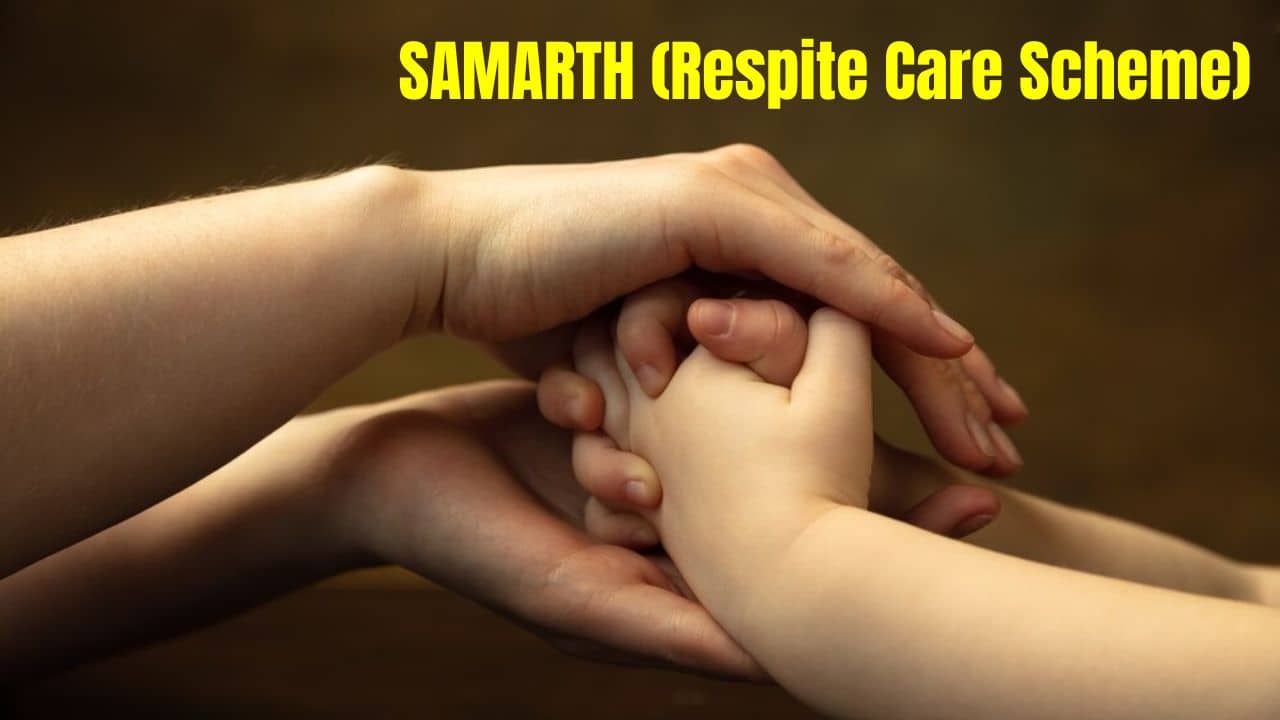
How to Get the SAMARTH Respite Care Scheme
1. Application Process:
- Online Application: Applicants can apply online through the official website of the National Trust (www.thenationaltrust.gov.in).
- Offline Application: Application forms can be obtained from registered organizations under the National Trust or local offices. These forms need to be filled out and submitted along with the required documents.
2. Required Documents:
- Disability Certificate: A certificate issued by a competent medical authority verifying the disability.
- Proof of Identity: Aadhaar card, Voter ID, or any other government-issued identity proof.
- Proof of Age: Birth certificate, school certificate, or any other document proving the age of the beneficiary.
- Recent Photograph: Passport-sized photograph of the beneficiary.
3. Submission:
Submit the completed application form along with the required documents to the nearest registered organization or directly to the National Trust.
Eligibility Criteria
To be eligible for the SAMARTH Respite Care Scheme, the following criteria must be met:
- Disability Type: The scheme is available for individuals with autism, cerebral palsy, mental retardation, and multiple disabilities.
- Age Limit: There is no specific age limit; individuals of all ages with the mentioned disabilities are eligible.
- Residency: The applicant must be a citizen of India.
Benefits of the SAMARTH Respite Care Scheme
1. Temporary Relief for Caregivers:
- Short-Term Care: The scheme provides short-term residential care for individuals with disabilities, allowing caregivers to take a break or attend to other responsibilities.
- Professional Care: Individuals receive care from trained professionals, ensuring that their needs are met in a safe and supportive environment.
2. Quality Residential Services:
- Comfortable Living Arrangements: Provision of comfortable and safe living spaces equipped with necessary facilities to cater to the needs of individuals with disabilities.
- Nutritious Meals: Ensuring that residents receive balanced and nutritious meals during their stay.
3. Comprehensive Care:
- Medical Support: Access to medical care and support from healthcare professionals to manage health needs and emergencies.
- Therapeutic Services: Availability of therapeutic services such as physiotherapy, occupational therapy, and recreational activities to promote well-being.
4. Social and Recreational Activities:
- Engagement Programs: Inclusion of social and recreational activities to engage individuals, promoting social skills and reducing feelings of isolation.
- Skill Development: Programs aimed at developing daily living skills and enhancing personal growth.
Additional Information
1. Duration of Care:
The SAMARTH scheme typically offers short-term care, which can range from a few days to a few weeks, depending on the needs of the individual and the availability of facilities.
2. Renewal Process:
The respite care service may need to be renewed based on the individual’s needs and circumstances. Families should contact the registered organization or the National Trust for renewal procedures.
3. Grievance Redressal:
Beneficiaries or their families can contact the National Trust or the respective registered organization for any grievances or issues related to the scheme. A dedicated helpline and email support are available for assistance.
4. Awareness and Outreach:
The National Trust, along with various NGOs and registered organizations, conducts awareness programs to educate families about the scheme and assist them in the application process.
The SAMARTH Respite Care Scheme is an essential initiative under the National Trust Act, providing much-needed support to caregivers of individuals with disabilities, including autism. By offering short-term residential care with professional support, the scheme ensures that individuals receive quality care while giving caregivers the opportunity to rest and rejuvenate.
For more information or to apply for the SAMARTH Respite Care Scheme, visit the National Trust’s official website or contact your nearest registered organization.
4. PRERNA (Marketing Assistance Scheme)
The PRERNA Marketing Assistance Scheme, under the National Trust Act, aims to support the economic empowerment of individuals with disabilities, including autism, cerebral palsy, mental retardation, and multiple disabilities. This scheme focuses on promoting products and services created by individuals with disabilities by providing marketing assistance, thereby fostering economic independence and self-sufficiency. Here’s a detailed guide on how to access this scheme, the application process, eligibility criteria, benefits, and other essential details.
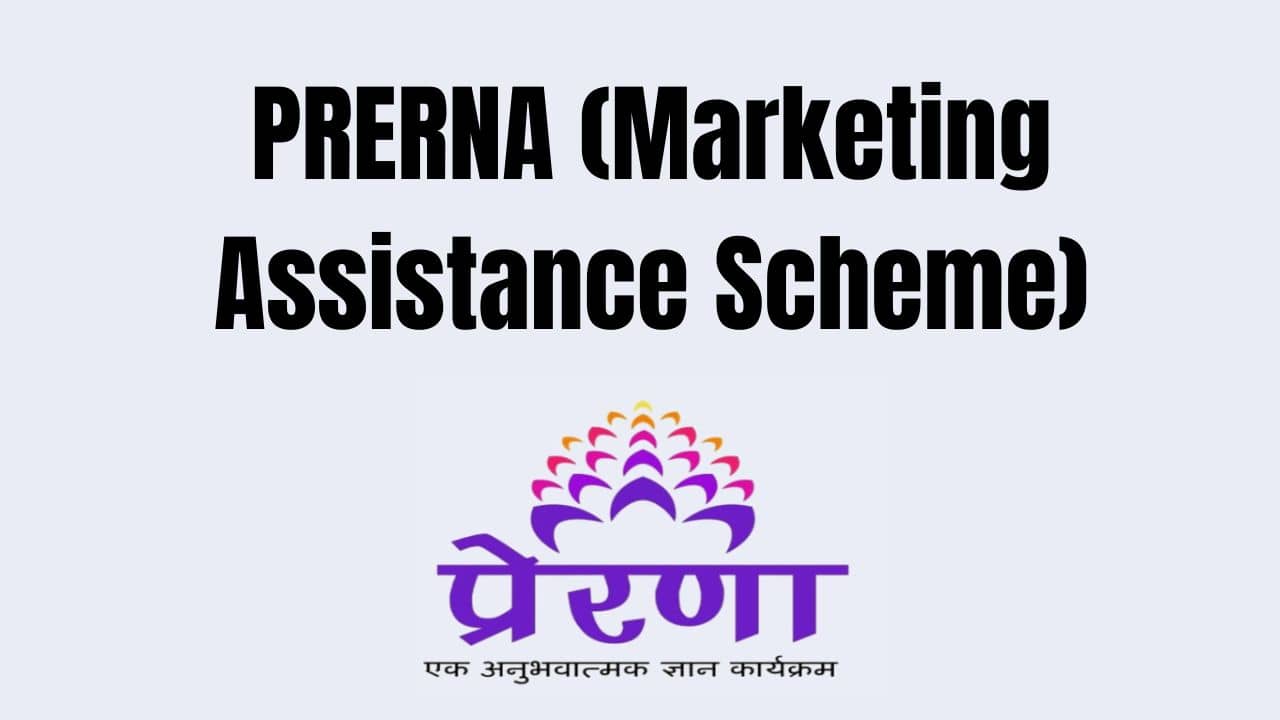
How to Get the PRERNA Marketing Assistance Scheme
1. Application Process:
- Online Application: Applicants can apply online through the official website of the National Trust (www.thenationaltrust.gov.in).
- Offline Application: Application forms can be obtained from registered organizations under the National Trust or local offices. These forms need to be filled out and submitted along with the required documents.
2. Required Documents:
- Disability Certificate: A certificate issued by a competent medical authority verifying the disability.
- Proof of Identity: Aadhaar card, Voter ID, or any other government-issued identity proof.
- Proof of Age: Birth certificate, school certificate, or any other document proving the age of the beneficiary.
- Business Plan: Detailed plan outlining the products or services to be marketed, including target audience, marketing strategies, and expected outcomes.
- Recent Photograph: Passport-sized photograph of the beneficiary.
3. Submission:
Submit the completed application form along with the required documents to the nearest registered organization or directly to the National Trust.
Eligibility Criteria
To be eligible for the PRERNA Marketing Assistance Scheme, the following criteria must be met:
- Disability Type: The scheme is available for individuals with autism, cerebral palsy, mental retardation, and multiple disabilities.
- Age Limit: There is no specific age limit; individuals of all ages with the mentioned disabilities are eligible.
- Residency: The applicant must be a citizen of India.
- Business Involvement: The applicant should be actively involved in producing or offering products or services.
Benefits of the PRERNA Marketing Assistance Scheme
1. Financial Support:
- Marketing Expenses: The scheme covers marketing expenses such as advertising, promotion, and participation in trade fairs and exhibitions.
- Subsidized Costs: Financial assistance to reduce the cost of marketing activities, making it more affordable for individuals and organizations.
2. Enhanced Market Reach:
- Exhibition Participation: Support for participating in national and international trade fairs and exhibitions, providing a platform to showcase products and services.
- Promotional Activities: Assistance with promotional activities, including online marketing, print advertisements, and other marketing channels.
3. Skill Development:
- Training Programs: Access to training programs focused on marketing skills, business management, and entrepreneurship.
- Workshops and Seminars: Participation in workshops and seminars to learn about effective marketing strategies and business development.
4. Business Growth:
- Increased Sales: Enhanced market reach and promotional activities lead to increased sales and revenue generation.
- Economic Independence: Promotes economic independence and self-sufficiency for individuals with disabilities.
5. Networking Opportunities:
- Business Networking: Opportunities to connect with potential buyers, investors, and business partners during trade fairs and exhibitions.
- Collaborative Ventures: Encouragement of collaborative ventures with other businesses and organizations.
Additional Information
1. Renewal Process:
The PRERNA scheme may require periodic renewal based on the specific marketing activities and needs of the business. Beneficiaries should contact the National Trust or registered organizations for renewal procedures.
2. Grievance Redressal:
Beneficiaries or their families can contact the National Trust or the respective registered organization for any grievances or issues related to the scheme. A dedicated helpline and email support are available for assistance.
3. Awareness and Outreach:
The National Trust, in collaboration with various NGOs and registered organizations, conducts awareness programs to educate families and individuals about the scheme and assist them in the application process.
The PRERNA Marketing Assistance Scheme is a crucial initiative under the National Trust Act, designed to empower individuals with disabilities by supporting their entrepreneurial efforts and promoting their products and services. By providing financial assistance for marketing activities, skill development opportunities, and platforms for showcasing their work, the scheme helps individuals with disabilities achieve economic independence and self-sufficiency.
For more information or to apply for the PRERNA Marketing Assistance Scheme, visit the National Trust’s official website or contact your nearest registered organization.
Also Read:- How To Reduce Hyperactivity In Autism
2. Disability Pension Schemes in India
Disability pension schemes in India are designed to provide financial assistance to individuals with disabilities, including those with autism, cerebral palsy, mental retardation, and multiple disabilities. These schemes are implemented by both the central and state governments to ensure economic stability and improve the quality of life for individuals with disabilities and their families. Here’s an in-depth look at the various disability pension schemes available, including how to access them, the application process, eligibility criteria, benefits, and other essential details.
Key Disability Pension Schemes in India
1. Indira Gandhi National Disability Pension Scheme (IGNDPS)
The Indira Gandhi National Disability Pension Scheme (IGNDPS) is a centrally sponsored scheme under the National Social Assistance Programme (NSAP). It provides financial assistance to persons with severe disabilities.
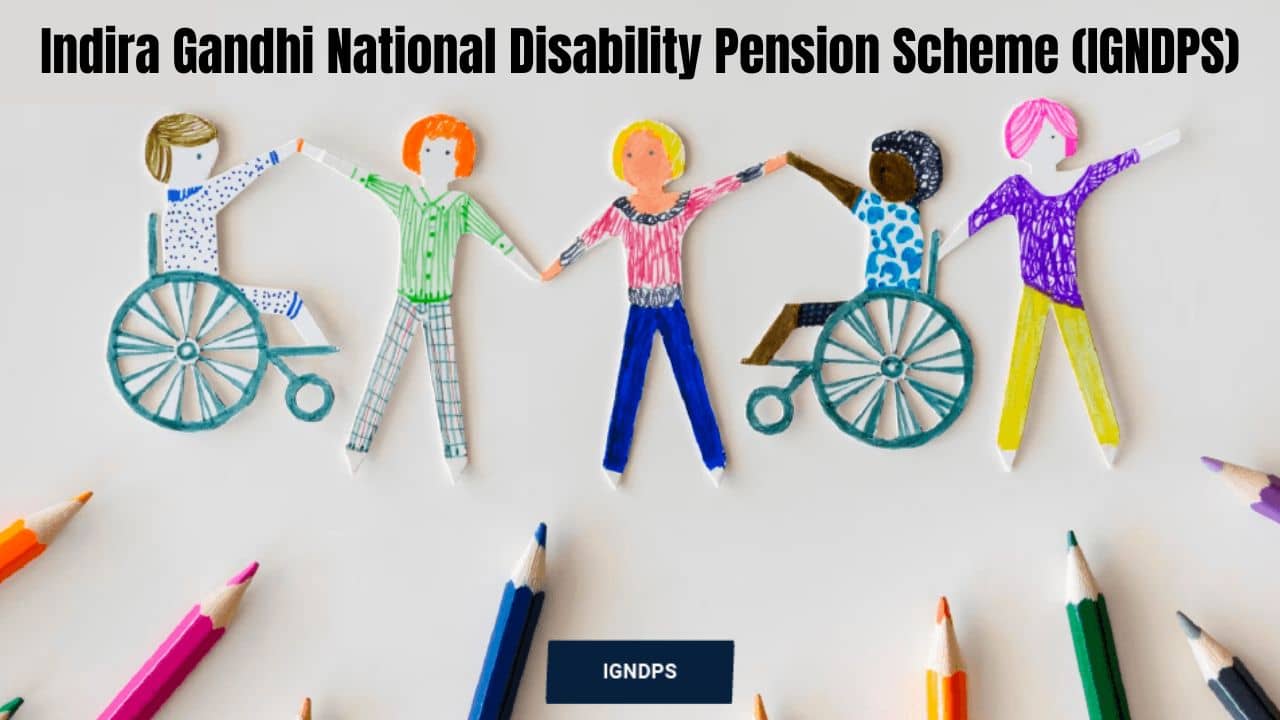
Application Process:
- Online Application: Apply through the NSAP portal or the respective state’s social welfare department website.
- Offline Application: Obtain and submit the application form at the local Block Development Officer (BDO) or Municipal Office.
Required Documents:
- Disability Certificate: Issued by a competent medical authority.
- Proof of Identity: Aadhaar card, Voter ID, or any other government-issued ID.
- Proof of Age: Birth certificate, school certificate, or any other document proving age.
- Bank Account Details: Copy of bank passbook or bank statement.
Eligibility Criteria:
- Disability: Persons with 80% or more disability.
- Age: 18 years and above.
- Residency: The applicant must be a citizen of India.
- Income: Belong to a household below the poverty line (BPL).
Benefits:
Monthly pension amount of INR 300, which can be supplemented by state government contributions.
2. State-Specific Disability Pension Schemes
Several states in India have their own disability pension schemes to provide additional financial support to individuals with disabilities. The eligibility criteria and benefits may vary from state to state.
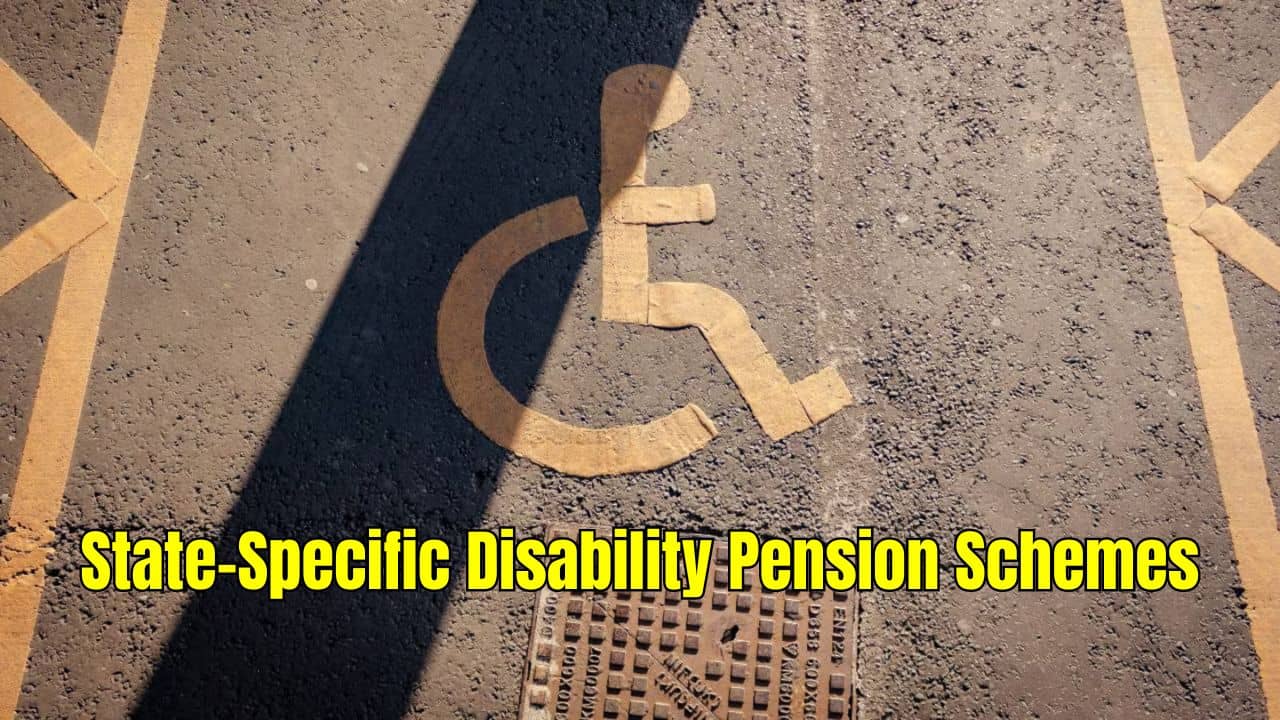
Example: Tamil Nadu State Disability Pension Scheme
- Application Process: Apply through the District Social Welfare Office or online through the state’s social welfare department website.
- Required Documents: Disability certificate, proof of identity, proof of age, bank account details, proof of residence.
- Eligibility Criteria: Individuals with 40% or more disability, resident of the state, belonging to BPL families.
- Benefits: Monthly pension amount of INR 1,000.
Example: West Bengal Disability Pension Scheme
- Application Process: Apply through the local Block Development Office or Municipal Office.
- Required Documents: Disability certificate, proof of identity, proof of age, proof of residence, income certificate.
- Eligibility Criteria: Individuals with 40% or more disability, resident of the state, belonging to BPL families.
- Benefits: Monthly pension amount of INR 750.
3. Chief Minister’s Relief Fund (CMRF)
Some states offer financial assistance to individuals with disabilities through the Chief Minister’s Relief Fund.
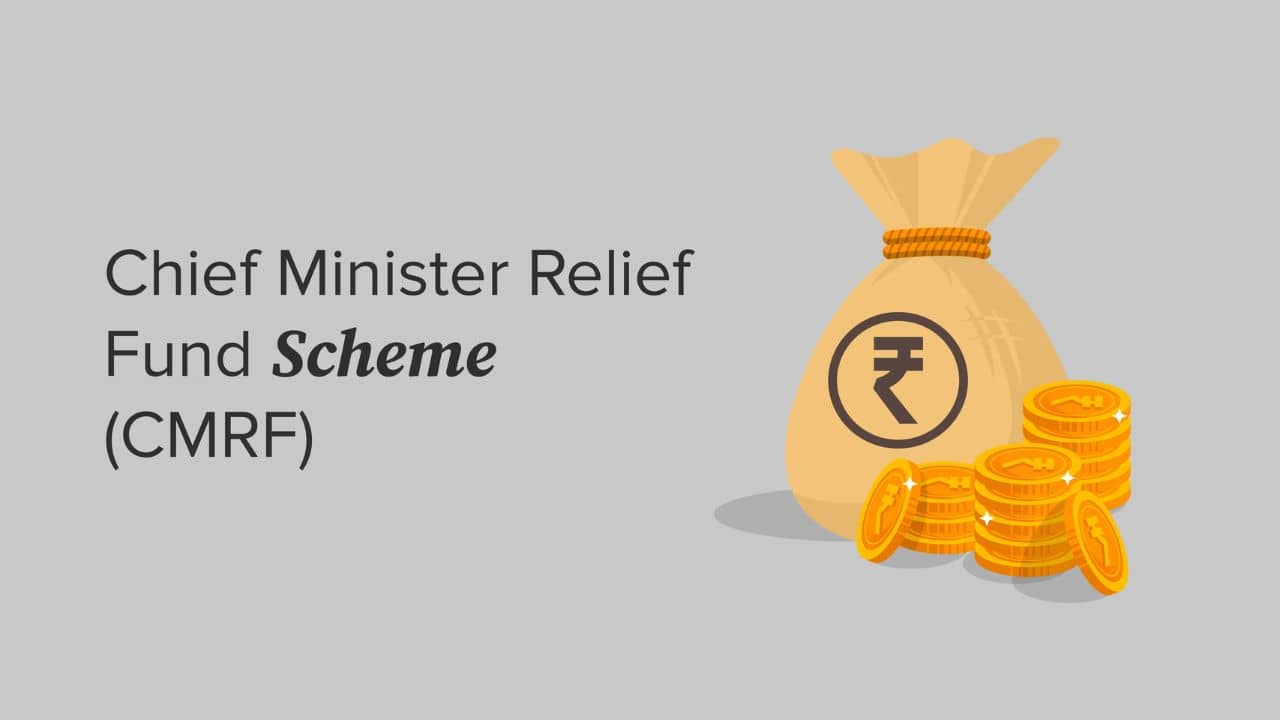
Application Process:
Apply directly to the office of the Chief Minister or through the local district administration.
Required Documents:
Disability certificate, proof of identity, proof of age, proof of residence, income certificate, and medical documents if required.
Eligibility Criteria:
Varies from state to state, but generally includes individuals with significant disabilities and those belonging to economically weaker sections.
Benefits:
One-time financial assistance or monthly pension, depending on the state’s policy and individual’s circumstances.
Additional Information
Renewal Process:
Disability pension schemes typically require annual renewal. Beneficiaries must submit updated documents to confirm continued eligibility.
Grievance Redressal:
Beneficiaries can contact the respective social welfare department or district administration for grievances or issues related to the pension scheme. A dedicated helpline and email support may be available.
Awareness and Outreach:
State governments, in collaboration with NGOs and other organizations, conduct awareness programs to educate families about the schemes and assist them in the application process.
Disability pension schemes in India play a crucial role in providing financial stability and support to individuals with disabilities and their families. By offering monthly pensions and financial assistance, these schemes ensure that beneficiaries can meet their basic needs and improve their quality of life. The Indira Gandhi National Disability Pension Scheme (IGNDPS) and various state-specific schemes collectively contribute to the well-being of the disabled community.
For more information or to apply for disability pension schemes, visit the respective state’s social welfare department website or contact the local social welfare office.
3. Inclusive Education Schemes
The government has implemented several schemes to promote inclusive education for children with autism:
1. Sarva Shiksha Abhiyan (SSA):
Sarva Shiksha Abhiyan (SSA) is a flagship program launched by the Government of India with the goal of universalizing elementary education. The initiative ensures that all children aged 6 to 14 years receive free and compulsory education, with a special focus on inclusive education for children with disabilities, including those with autism. This guide provides an overview of SSA, its objectives, implementation strategies, benefits, and specific provisions for children with disabilities.
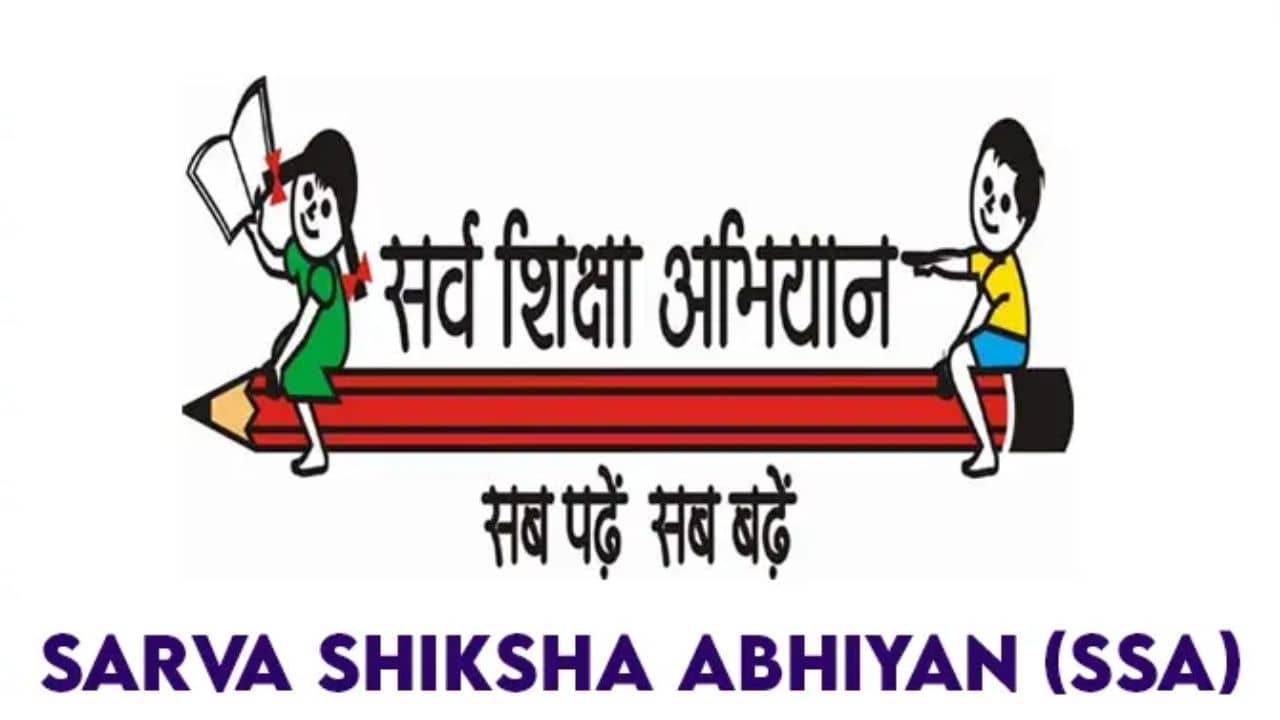
Objectives of Sarva Shiksha Abhiyan (SSA)
- Universal Access and Enrollment: Ensure that every child in the 6-14 age group is enrolled in school and attends regularly.
- Retention and Completion: Improve retention rates and ensure that children complete elementary education.
- Quality Education: Enhance the quality of education to enable children to achieve grade-appropriate learning levels.
- Equity: Address the educational needs of children from marginalized communities, including children with disabilities.
Key Features and Implementation Strategies
1. Inclusive Education for Children with Disabilities:
- Identification and Assessment: Conduct surveys to identify children with disabilities and assess their educational needs.
- Individualized Education Plans (IEP): Develop tailored education plans to meet the unique needs of each child.
- Resource Rooms and Support Services: Establish resource rooms with specialized teaching aids and support services, including speech therapy, occupational therapy, and counseling.
2. Infrastructure Development:
- Barrier-Free Access: Ensure that school infrastructure is accessible, with ramps, accessible toilets, and other facilities to accommodate children with disabilities.
- Assistive Devices: Provide assistive devices such as hearing aids, wheelchairs, and braille materials to support learning.
3. Teacher Training:
- Special Educator Training: Train teachers in special education techniques to effectively teach children with disabilities.
- Continuous Professional Development: Regular in-service training programs to update teachers on inclusive education practices.
4. Community Mobilization and Awareness:
- Parent and Community Involvement: Engage parents and community members in the educational process through awareness campaigns and community meetings.
- Awareness Programs: Conduct programs to sensitize communities about the rights and educational needs of children with disabilities.
5. Monitoring and Evaluation:
- Regular Monitoring: Implement robust monitoring mechanisms to track the progress of children with disabilities and the effectiveness of inclusive education strategies.
- Data Collection: Maintain detailed records of enrollment, attendance, and academic progress of children with disabilities.
Benefits of Sarva Shiksha Abhiyan (SSA)
1. Access to Education:
- Ensures that children with disabilities have access to free and compulsory education in their neighborhood schools.
- Promotes an inclusive learning environment where children with and without disabilities learn together.
2. Tailored Educational Support:
- Individualized Education Plans (IEPs) cater to the specific needs of children with disabilities, ensuring they receive appropriate educational interventions.
- Resource rooms and specialized support services enhance learning outcomes for children with disabilities.
3. Empowerment and Inclusion:
- Empowers children with disabilities by providing them with the skills and knowledge needed to lead independent lives.
- Fosters a sense of inclusion and belonging, reducing stigmatization and discrimination.
4. Enhanced Teacher Competence:
- Training programs equip teachers with the skills needed to support diverse learners, improving overall teaching quality.
- Special educators provide additional support to mainstream teachers, enhancing the learning experience for children with disabilities.
5. Community Engagement:
- Involves parents and community members in the educational process, creating a supportive network for children with disabilities.
- Awareness programs help change societal attitudes towards disability, promoting acceptance and inclusion.
Specific Provisions for Children with Disabilities
1. Financial Assistance:
- Scholarships and financial support for children with disabilities to cover educational expenses.
- Grants for purchasing assistive devices and aids.
2. Home-Based Education:
For children with severe disabilities who cannot attend regular school, SSA provides home-based education to ensure they receive quality education.
3. Inclusive Curriculum:
- Adaptation of the curriculum to meet the diverse learning needs of children with disabilities.
- Use of multi-sensory teaching methods and learning materials to facilitate effective learning.
4. Support Services:
Provision of speech and language therapy, physiotherapy, and psychological counseling as part of the educational support services.
Sarva Shiksha Abhiyan (SSA) is a transformative initiative that has significantly advanced the cause of inclusive education in India. By providing comprehensive support to children with disabilities, SSA ensures that they receive quality education and opportunities for personal and academic growth. The program’s focus on inclusive infrastructure, teacher training, community involvement, and individualized support makes it a model for achieving educational equity.
For more information or to learn how SSA can benefit your child, visit the official SSA website or contact your local education department.
4. Rashtriya Madhyamik Shiksha Abhiyan (RMSA)
Rashtriya Madhyamik Shiksha Abhiyan (RMSA) is a centrally sponsored scheme launched by the Government of India in March 2009. The scheme aims to enhance access to secondary education and improve its quality by ensuring universal education for all children aged 14 to 18 years. RMSA places special emphasis on the inclusion of marginalized groups, including children with disabilities. This guide provides an overview of RMSA, its objectives, implementation strategies, benefits, and specific provisions for children with disabilities.
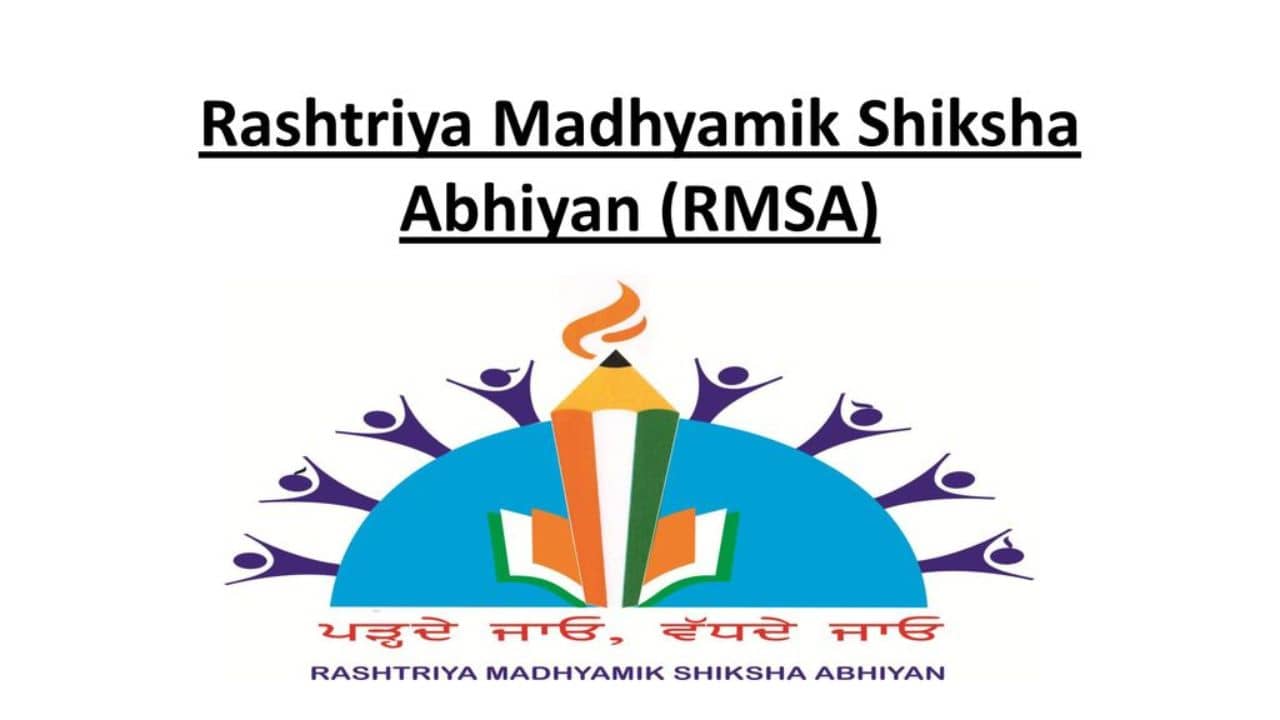
Objectives of Rashtriya Madhyamik Shiksha Abhiyan (RMSA)
- Universal Access and Enrollment: Ensure that every child in the 14-18 age group has access to secondary education.
- Quality Improvement: Enhance the quality of secondary education to ensure that students achieve higher learning outcomes.
- Equity: Address the educational needs of marginalized groups, including children with disabilities, to promote inclusive education.
- Infrastructure Development: Improve and expand school infrastructure to accommodate more students and provide a conducive learning environment.
Key Features and Implementation Strategies
1. Inclusive Education for Children with Disabilities:
- Identification and Assessment: Conduct surveys to identify children with disabilities and assess their educational needs.
- Individualized Education Plans (IEP): Develop personalized education plans to meet the unique needs of each student.
- Support Services: Provide specialized support services, including speech therapy, occupational therapy, and counseling.
2. Infrastructure Development:
- Barrier-Free Access: Ensure that school infrastructure is accessible, with ramps, accessible toilets, and other facilities to accommodate students with disabilities.
- Assistive Devices: Supply assistive devices such as hearing aids, wheelchairs, and braille materials to support learning.
3. Teacher Training:
- Special Educator Training: Train teachers in special education techniques to effectively teach students with disabilities.
- Continuous Professional Development: Provide regular in-service training programs to update teachers on inclusive education practices.
4. Quality Enhancement:
- Curriculum Development: Update and adapt the curriculum to meet the needs of diverse learners, including children with disabilities.
- Assessment Reforms: Implement reforms in assessment and evaluation to accurately reflect students’ learning outcomes.
5. Community Mobilization and Awareness:
- Parent and Community Involvement: Engage parents and community members in the educational process through awareness campaigns and community meetings.
- Awareness Programs: Conduct programs to sensitize communities about the rights and educational needs of children with disabilities.
6. Monitoring and Evaluation:
- Regular Monitoring: Implement robust monitoring mechanisms to track the progress of students with disabilities and the effectiveness of inclusive education strategies.
- Data Collection: Maintain detailed records of enrollment, attendance, and academic progress of students with disabilities.
Benefits of Rashtriya Madhyamik Shiksha Abhiyan (RMSA)
1. Enhanced Access to Secondary Education:
- Ensures that children with disabilities have access to secondary education in inclusive settings.
- Promotes the inclusion of students from marginalized communities, including those with disabilities.
2. Improved Quality of Education:
- Enhances the quality of secondary education through curriculum development, teacher training, and support services.
- Ensures that students achieve higher learning outcomes and are better prepared for further education or employment.
3. Tailored Educational Support:
- Individualized Education Plans (IEPs) cater to the specific needs of students with disabilities, ensuring they receive appropriate educational interventions.
- Specialized support services enhance learning outcomes for students with disabilities.
4. Empowerment and Inclusion:
- Empowers students with disabilities by providing them with the skills and knowledge needed to lead independent lives.
- Fosters a sense of inclusion and belonging, reducing stigmatization and discrimination.
5. Enhanced Teacher Competence:
- Training programs equip teachers with the skills needed to support diverse learners, improving overall teaching quality.
- Special educators provide additional support to mainstream teachers, enhancing the learning experience for students with disabilities.
6. Infrastructure Development:
- Upgraded school infrastructure ensures a conducive learning environment for all students, including those with disabilities.
- Provision of barrier-free access and assistive devices enables students with disabilities to navigate the school environment easily.
7. Community Engagement:
- Involves parents and community members in the educational process, creating a supportive network for students with disabilities.
- Awareness programs help change societal attitudes towards disability, promoting acceptance and inclusion.
Specific Provisions for Children with Disabilities
1. Financial Assistance:
- Scholarships and financial support for students with disabilities to cover educational expenses.
- Grants for purchasing assistive devices and aids.
2. Home-Based Education:
For students with severe disabilities who cannot attend regular school, RMSA provides home-based education to ensure they receive quality education.
3. Inclusive Curriculum:
Adaptation of the curriculum to meet the diverse learning needs of students with disabilities.
Use of multi-sensory teaching methods and learning materials to facilitate effective learning.
4. Support Services:
Provision of speech and language therapy, physiotherapy, and psychological counseling as part of the educational support services.
Additional Information
1. Renewal Process:
Disability education support typically requires annual renewal. Beneficiaries must submit updated documents to confirm continued eligibility.
2. Grievance Redressal:
Beneficiaries can contact the respective education department or district administration for grievances or issues related to the scheme. A dedicated helpline and email support may be available.
3. Awareness and Outreach:
State governments, in collaboration with NGOs and other organizations, conduct awareness programs to educate families about the schemes and assist them in the application process.
Rashtriya Madhyamik Shiksha Abhiyan (RMSA) is a transformative initiative aimed at enhancing access to and the quality of secondary education in India. By focusing on inclusive education, RMSA ensures that children with disabilities receive the support and resources they need to thrive academically and socially. The scheme’s emphasis on infrastructure development, teacher training, community involvement, and personalized educational support makes it a model for achieving educational equity.
For more information or to learn how RMSA can benefit your child, visit the official RMSA website or contact your local education department.
5. Accessible India Campaign (Sugamya Bharat Abhiyan)
The Accessible India Campaign, also known as Sugamya Bharat Abhiyan, is an initiative launched by the Government of India in 2015. The campaign aims to make public spaces, transportation systems, and information and communication technology accessible to all, particularly people with disabilities. This guide provides an overview of the Accessible India Campaign, its objectives, key features, implementation strategies, benefits, and ways to participate.
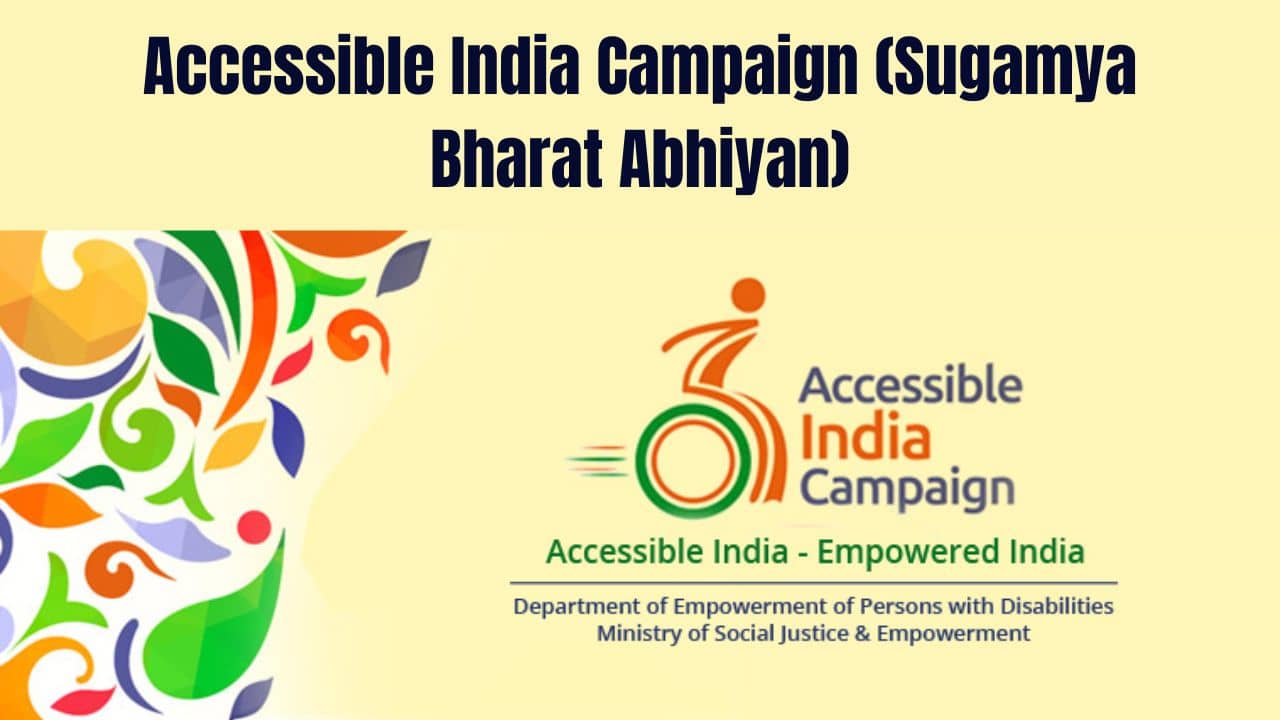
Objectives of the Accessible India Campaign
- Create Barrier-Free Built Environment: Ensure that public buildings and spaces are accessible to people with disabilities.
- Accessible Transportation Systems: Enhance the accessibility of transportation systems, including railways, airports, and public transport.
- Accessible Information and Communication Technology (ICT): Make ICT, including websites and digital services, accessible to people with disabilities.
- Raise Awareness: Increase awareness about accessibility issues and promote an inclusive society.
Key Features and Implementation Strategies
1. Barrier-Free Built Environment:
- Public Buildings: Modify and retrofit existing public buildings to make them accessible. This includes installing ramps, accessible toilets, and elevators.
- Government Offices: Ensure that all government buildings are accessible by setting deadlines for necessary modifications.
- Accessibility Audits: Conduct audits of buildings to identify and address accessibility barriers.
2. Accessible Transportation Systems:
- Railway Stations: Upgrade railway stations to include accessible platforms, ticket counters, and toilets.
- Airports: Ensure that airports are fully accessible, with facilities like accessible check-in counters, toilets, and assistance services.
- Public Transport: Retrofit buses and other public transport vehicles to include ramps, priority seating, and audio-visual aids for passengers with disabilities.
3. Accessible Information and Communication Technology (ICT):
- Government Websites: Ensure that all government websites comply with accessibility standards, making them usable by people with various disabilities.
- Digital Services: Promote the development of accessible digital services and applications.
- Assistive Technologies: Encourage the use and development of assistive technologies, such as screen readers and voice recognition software.
4. Raising Awareness:
- Awareness Campaigns: Conduct nationwide campaigns to raise awareness about accessibility issues and the rights of people with disabilities.
- Workshops and Seminars: Organize workshops and seminars to educate stakeholders about the importance of accessibility and how to implement it effectively.
- Community Involvement: Engage communities, including people with disabilities, in the planning and implementation of accessibility initiatives.
Benefits of the Accessible India Campaign
1. Enhanced Mobility and Independence:
- Makes it easier for people with disabilities to navigate public spaces, thereby enhancing their mobility and independence.
- Accessible transportation systems allow for easier and safer travel.
2. Inclusive Society:
- Promotes inclusivity by ensuring that people with disabilities can participate fully in society.
- Reduces barriers and discrimination faced by people with disabilities in accessing public services and facilities.
3. Economic Benefits:
- Improves employment opportunities for people with disabilities by making workplaces accessible.
- Enhances tourism by making tourist destinations accessible to everyone.
4. Compliance with Legal Framework:
Ensures compliance with the Rights of Persons with Disabilities Act, 2016, which mandates accessibility in various sectors.
5. Technological Advancements:
- Promotes the development and adoption of assistive technologies and accessible ICT solutions.
- Encourages innovation in creating accessible products and services.
How to Participate in the Accessible India Campaign
1. Government Bodies:
- Implement accessibility guidelines and standards in public buildings and facilities.
- Conduct accessibility audits and take corrective measures to eliminate barriers.
2. Private Sector:
- Ensure that private businesses, including offices, malls, and entertainment venues, are accessible.
- Invest in accessible technologies and infrastructure.
3. Non-Governmental Organizations (NGOs):
- Advocate for accessibility and inclusivity in various sectors.
- Collaborate with the government and private sector to promote accessible initiatives.
4. Individuals:
- Raise awareness about accessibility issues within your community.
- Advocate for accessible facilities and services in your area.
- Participate in workshops and seminars to learn about accessibility best practices.
Monitoring and Evaluation
1. Progress Tracking:
- Regularly monitor the implementation of accessibility measures and track progress against set targets.
- Use feedback from people with disabilities to identify areas for improvement.
2. Reporting Mechanisms:
- Establish mechanisms for reporting accessibility issues and ensure timely resolution.
- Publish periodic reports on the progress of the Accessible India Campaign to maintain transparency and accountability.
The Accessible India Campaign (Sugamya Bharat Abhiyan) is a transformative initiative aimed at creating an inclusive and barrier-free environment for people with disabilities. By focusing on accessible public spaces, transportation systems, and ICT, the campaign ensures that people with disabilities can participate fully in society. The combined efforts of government bodies, the private sector, NGOs, and individuals are essential to the success of this initiative.
For more information or to get involved in the Accessible India Campaign, visit the official website of the Ministry of Social Justice and Empowerment or contact your local government office.
6. Assistance to Disabled Persons for Purchase / Fitting of Aids and Appliances (ADIP Scheme)
The Assistance to Disabled Persons for Purchase / Fitting of Aids and Appliances (ADIP) Scheme is an initiative by the Government of India aimed at providing financial assistance to disabled persons for the purchase and fitting of aids and appliances. This scheme is designed to enhance the mobility, independence, and overall quality of life of individuals with disabilities. Here’s an in-depth look at the ADIP Scheme, including how to access it, the application process, eligibility criteria, benefits, and other essential details.
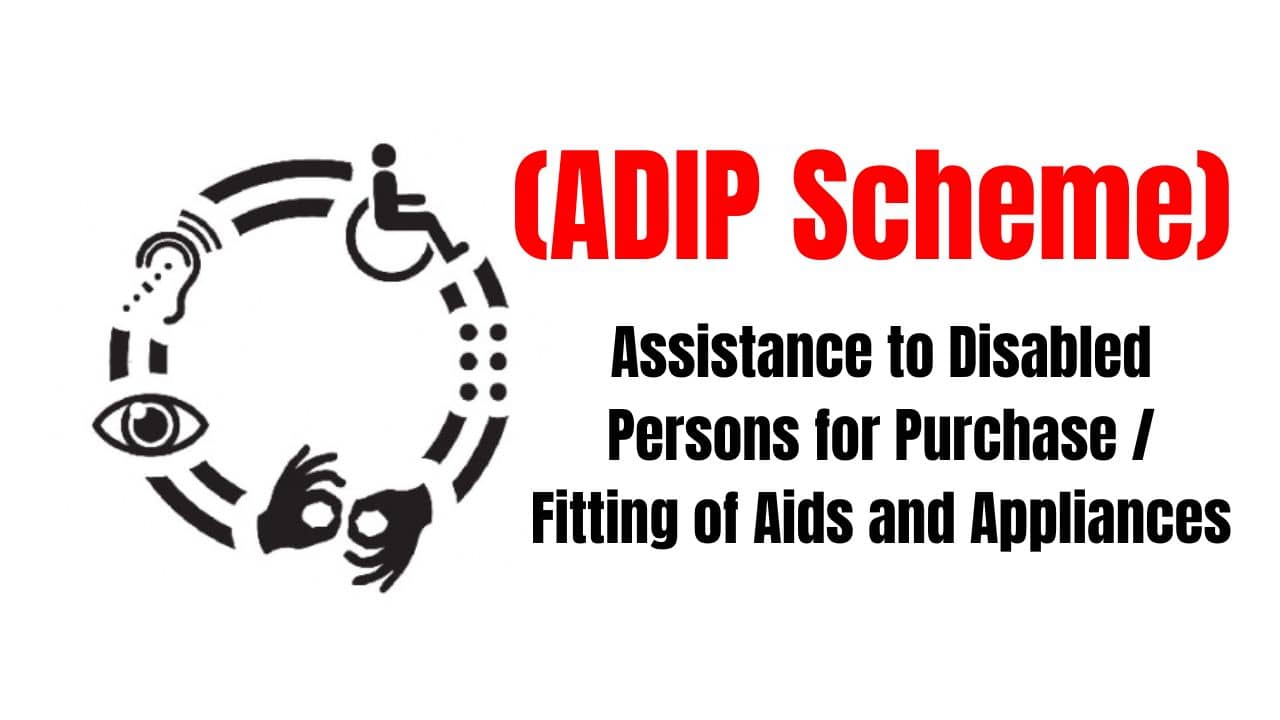
Objectives of the ADIP Scheme
- Enhance Mobility and Independence: Provide aids and appliances to disabled individuals to improve their mobility and independence.
- Improve Quality of Life: Assist disabled persons in performing daily activities, thereby improving their quality of life.
- Promote Inclusivity: Ensure that disabled persons have the necessary tools to participate fully in society.
Key Features of the ADIP Scheme
1. Aids and Appliances Covered:
- Mobility Aids: Wheelchairs, tricycles, crutches, walking sticks, and walking frames.
- Hearing Aids: Various types of hearing aids for individuals with hearing impairments.
- Vision Aids: Low vision aids and other devices for individuals with visual impairments.
- Orthopedic Aids: Prosthetic and orthotic devices for individuals with limb disabilities.
- Other Appliances: Devices such as Braille kits, smart canes, and artificial limbs.
2. Financial Assistance:
- Full Cost Coverage: For individuals with an annual income up to INR 15,000, the scheme covers the full cost of aids and appliances.
- Partial Cost Coverage: For individuals with an annual income between INR 15,001 and INR 20,000, the scheme covers up to 50% of the cost.
3. Customization and Fitting:
Customization and fitting services are provided to ensure that the aids and appliances meet the specific needs of the beneficiaries.
4. Implementation through NGOs:
The scheme is implemented through registered NGOs, National Institutes, and ALIMCO (Artificial Limbs Manufacturing Corporation of India).
Eligibility Criteria
1. Disability:
The applicant must have a disability of at least 40% certified by a competent medical authority.
2. Age:
The scheme is available to all age groups, with a special focus on children and elderly persons with disabilities.
3. Income:
The applicant’s monthly income should not exceed INR 20,000.
4. Frequency:
The aids and appliances provided under the scheme should not have been received by the beneficiary during the last three years for durable items (e.g., tricycles, wheelchairs) and one year for consumable items (e.g., hearing aids).
Application Process
1. Identification and Assessment Camps:
Beneficiaries are identified through camps organized by implementing agencies. These camps assess the type and extent of disability and recommend suitable aids and appliances.
2. Documentation:
- Disability Certificate: Issued by a competent medical authority.
- Proof of Identity: Aadhaar card, Voter ID, or any other government-issued ID.
- Proof of Income: Income certificate or self-declaration.
- Photographs: Recent passport-size photographs of the applicant.
3. Submission of Application:
Applications can be submitted through the implementing agency (NGOs, National Institutes, or ALIMCO) either online or offline.
4. Sanction and Distribution:
Once the application is approved, the aids and appliances are provided to the beneficiaries at the distribution camps organized by the implementing agencies.
Benefits of the ADIP Scheme
1. Enhanced Mobility and Independence:
Provides mobility aids that enable individuals to move around independently and perform daily activities with ease.
2. Improved Quality of Life:
Enhances the quality of life by assisting individuals in performing routine tasks, leading to greater self-reliance and confidence.
3. Inclusivity and Participation:
Promotes social inclusion by enabling individuals with disabilities to participate more actively in educational, social, and economic activities.
4. Financial Relief:
Offers significant financial relief to families by covering the cost of expensive aids and appliances.
5. Customization and Support:
Provides customized aids and appliances that are specifically fitted to meet the individual needs of each beneficiary, ensuring maximum effectiveness and comfort.
Monitoring and Evaluation
1. Regular Monitoring:
Implementing agencies regularly monitor the distribution and usage of aids and appliances to ensure they meet the beneficiaries’ needs.
2. Feedback Mechanism:
Beneficiaries can provide feedback on the aids and appliances received, helping to improve the scheme’s implementation and effectiveness.
3. Reporting:
Implementing agencies are required to submit periodic reports on the progress and impact of the scheme to the Ministry of Social Justice and Empowerment.
The Assistance to Disabled Persons for Purchase / Fitting of Aids and Appliances (ADIP) Scheme is a critical initiative that significantly enhances the mobility, independence, and quality of life of individuals with disabilities. By providing necessary aids and appliances, the scheme ensures that disabled persons can participate fully in society, leading to greater inclusivity and empowerment.
For more information or to apply for the ADIP Scheme, visit the official website of the Ministry of Social Justice and Empowerment or contact your local implementing agency.
7. National Handicapped Finance and Development Corporation (NHFDC)
The National Handicapped Finance and Development Corporation (NHFDC) is a government agency under the Ministry of Social Justice and Empowerment, Government of India. It was established in 1997 with the primary objective of promoting economic empowerment and self-reliance among persons with disabilities through financial support and development programs. This comprehensive guide provides an overview of NHFDC, its objectives, key features, financial schemes, benefits, and how to apply for assistance.
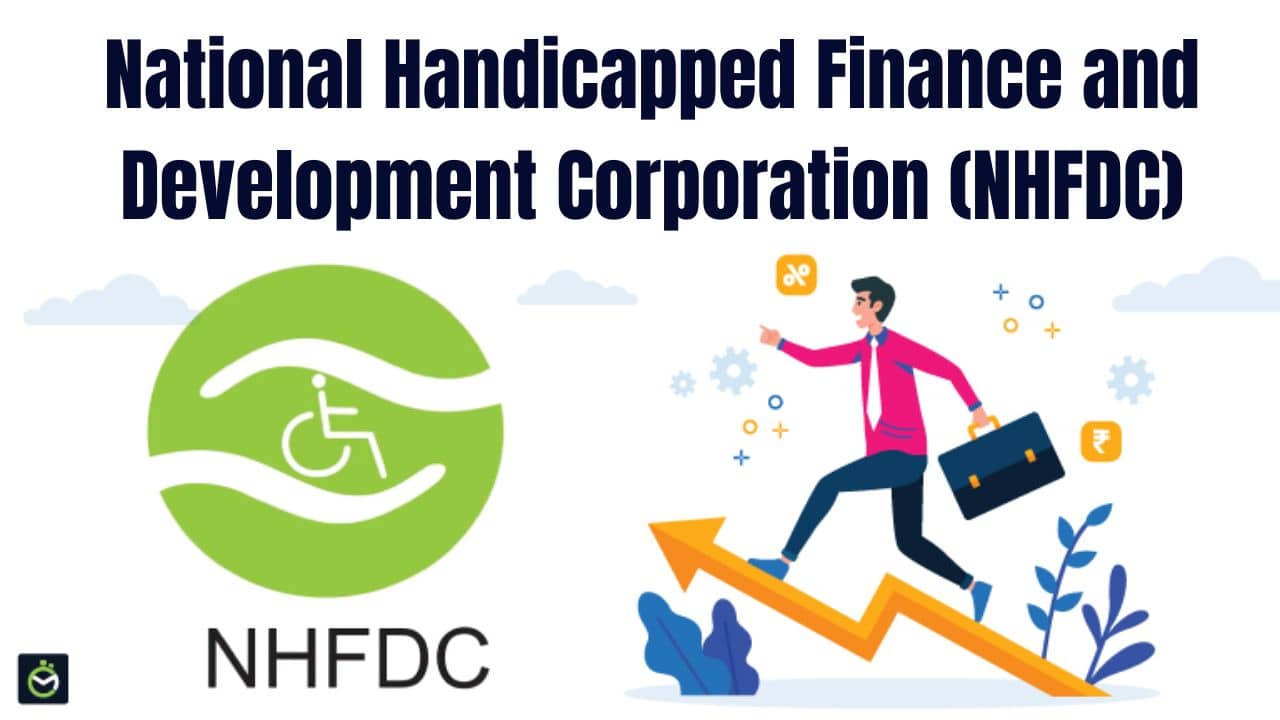
Objectives of NHFDC
- Economic Empowerment: Provide financial assistance to individuals with disabilities for self-employment ventures and higher education.
- Skill Development: Enhance the skills of persons with disabilities through training and capacity-building programs.
- Inclusive Growth: Promote inclusive economic growth by supporting the entrepreneurial aspirations of disabled individuals.
- Improvement of Quality of Life: Improve the quality of life of persons with disabilities by providing them with the necessary financial resources to become self-reliant.
Key Features and Schemes of NHFDC
1. Loan Schemes for Self-Employment:
- Micro Finance Scheme: Provides micro-loans to disabled persons for setting up small businesses or enhancing existing ventures.
- Small Business Loan Scheme: Offers loans for starting small businesses, retail shops, workshops, service centers, and more.
- Agriculture Loan Scheme: Financial assistance for agriculture and allied activities, including dairy farming, horticulture, sericulture, and fisheries.
2. Education Loan Scheme:
- Scholarship Programs: Provides scholarships for students with disabilities pursuing professional and technical courses at graduate and postgraduate levels.
- Education Loans: Offers loans for higher education in India and abroad, covering tuition fees, books, accommodation, and other related expenses.
3. Skill and Entrepreneurial Development:
- Skill Training Programs: Conducts various skill training programs in collaboration with NGOs, vocational training institutes, and other organizations.
- Entrepreneurship Development Programs: Provides training and support for entrepreneurship development to empower individuals with disabilities to start their own businesses.
4. Financial Support for NGOs:
- Grants to NGOs: Provides grants to NGOs working for the economic empowerment of persons with disabilities for conducting training programs and creating awareness.
Benefits of NHFDC
1. Financial Independence:
Enables persons with disabilities to become financially independent by providing them with the necessary financial resources to start their own businesses or pursue higher education.
2. Skill Enhancement:
Enhances the skills and capacities of disabled individuals through various training programs, leading to better employment opportunities and higher income levels.
3. Increased Employment Opportunities:
Promotes self-employment and entrepreneurship among persons with disabilities, leading to increased employment opportunities and economic participation.
4. Educational Advancement:
Supports the educational aspirations of students with disabilities by providing scholarships and education loans, enabling them to achieve their academic and career goals.
5. Inclusive Development:
Contributes to the inclusive economic development of the nation by ensuring that persons with disabilities have equal access to financial and development opportunities.
Eligibility Criteria
1. Disability:
The applicant must have a disability of at least 40% certified by a competent medical authority.
2. Age:
The applicant should be between 18 and 60 years of age for loan schemes.
3. Education:
For education loans and scholarship programs, the applicant must meet the academic eligibility criteria specified for the particular course or program.
4. Income:
The applicant’s family income should not exceed the limits specified for the particular scheme or program.
Application Process
1. Identify the Scheme:
Determine which NHFDC scheme best suits your needs, whether it’s for self-employment, education, skill development, or NGO support.
2. Documentation:
- Disability Certificate: Issued by a competent medical authority.
- Proof of Identity: Aadhaar card, Voter ID, or any other government-issued ID.
- Proof of Income: Income certificate or self-declaration.
- Business Plan: For self-employment loans, a detailed business plan may be required.
- Educational Documents: For education loans, copies of academic certificates and admission letters.
3. Submission of Application:
Applications can be submitted through the NHFDC website, designated banks, or partner NGOs. Forms are available both online and offline.
4. Sanction and Disbursement:
Once the application is reviewed and approved, the financial assistance is disbursed to the applicant’s bank account or directly to the educational institution in case of education loans.
Monitoring and Evaluation
1. Regular Monitoring:
- NHFDC regularly monitors the utilization of funds to ensure that they are used for the intended purpose.
- Implementing agencies submit periodic reports on the progress and impact of the funded projects.
2. Feedback Mechanism:
Beneficiaries can provide feedback on the assistance received, helping to improve the implementation and effectiveness of NHFDC schemes.
3. Transparency and Accountability:
NHFDC maintains transparency and accountability in its operations by regularly publishing reports on the utilization of funds and the outcomes of various schemes.
The National Handicapped Finance and Development Corporation (NHFDC) plays a crucial role in the economic empowerment of persons with disabilities in India. By providing financial assistance for self-employment, education, and skill development, NHFDC ensures that disabled individuals have the resources they need to become self-reliant and achieve their full potential. The inclusive approach of NHFDC contributes to the overall economic development of the nation and promotes a society where everyone has equal opportunities.
For more information or to apply for NHFDC schemes, visit the official NHFDC website or contact your local NHFDC office.
8. Deendayal Disabled Rehabilitation Scheme (DDRS)
The Deendayal Disabled Rehabilitation Scheme (DDRS) is an initiative by the Government of India, managed by the Ministry of Social Justice and Empowerment. Launched with the aim of providing comprehensive rehabilitation services to persons with disabilities, DDRS supports voluntary organizations in delivering various services. This guide provides an overview of DDRS, its objectives, key features, eligibility criteria, application process, benefits, and other essential details.
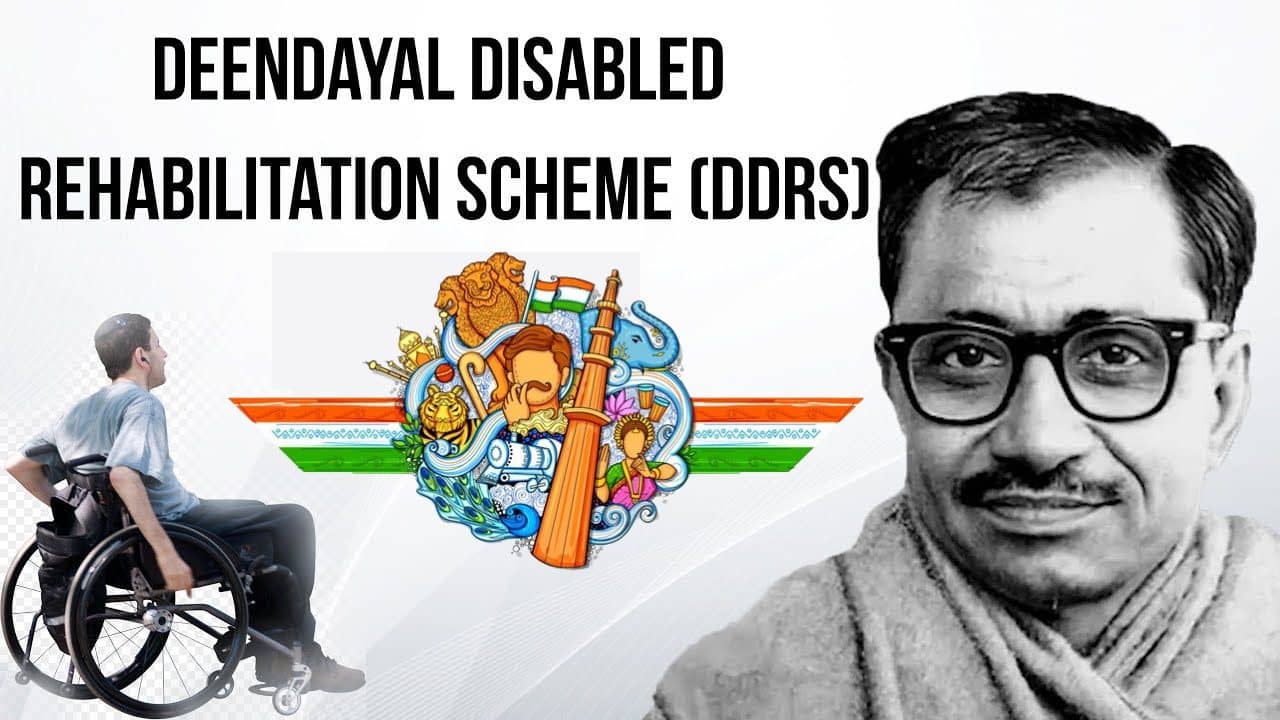
Objectives of DDRS
- Comprehensive Rehabilitation: Provide comprehensive rehabilitation services to persons with disabilities.
- Promote Voluntary Action: Encourage and support voluntary organizations in delivering rehabilitation services.
- Social Inclusion: Promote the inclusion and empowerment of persons with disabilities in society.
- Capacity Building: Enhance the capacities of voluntary organizations working in the disability sector.
Key Features and Components of DDRS
1. Financial Assistance to NGOs:
- Provides grants to voluntary organizations (NGOs) for delivering various rehabilitation services to persons with disabilities.
- Supports activities such as special education, vocational training, employment services, and community-based rehabilitation.
2. Types of Services Covered:
- Special Education: Educational services for children with disabilities.
- Vocational Training: Training programs to enhance employability and self-employment opportunities for disabled individuals.
- Therapeutic Services: Physiotherapy, occupational therapy, speech therapy, and other therapeutic services.
- Community-Based Rehabilitation: Services aimed at integrating persons with disabilities into their communities.
- Early Intervention: Early identification and intervention services for children with disabilities.
3. Capacity Building and Awareness:
- Supports capacity building of NGOs through training programs, workshops, and seminars.
- Conducts awareness campaigns to sensitize communities about disability issues and promote inclusive practices.
4. Monitoring and Evaluation:
- Regular monitoring and evaluation of funded projects to ensure effective implementation and utilization of funds.
- Involves periodic reporting and inspections to maintain accountability and transparency.
- Eligibility Criteria for NGOs
1. Registration:
The organization must be registered under the Societies Registration Act, 1860, or the corresponding state legislation, or under the Indian Trusts Act, 1882.
2. Experience:
The organization should have at least two years of experience in the field of disability rehabilitation or related areas.
3. Infrastructure:
Adequate infrastructure and trained personnel to deliver the proposed rehabilitation services.
4. Financial Stability:
Sound financial management and a proven track record of implementing projects successfully.
Application Process
1. Identification of Needs:
Assess the needs of the target population and develop a comprehensive project proposal outlining the services to be provided.
2. Documentation:
- Registration Certificate: Proof of the organization’s registration under the relevant act.
- Audited Accounts: Audited financial statements for the last two years.
- Project Proposal: Detailed proposal outlining the objectives, target population, services to be provided, and budget requirements.
3. Submission of Application:
- Applications can be submitted online through the Ministry of Social Justice and Empowerment’s website or offline to the relevant department.
- Ensure that all required documents and details are included in the application.
4. Evaluation and Approval:
- The application is evaluated by a committee, which may involve site inspections and interactions with the organization’s representatives.
- Once approved, the organization receives financial assistance to implement the proposed project.
Benefits of DDRS
1. Comprehensive Rehabilitation Services:
Provides a wide range of rehabilitation services to persons with disabilities, improving their quality of life and promoting independence.
2. Financial Support for NGOs:
Offers crucial financial support to voluntary organizations, enabling them to deliver effective rehabilitation services.
3. Empowerment and Inclusion:
Promotes the social and economic inclusion of persons with disabilities, ensuring they can participate fully in society.
4. Capacity Building:
Enhances the capacities of NGOs through training and development programs, improving the quality of services delivered.
5. Community Awareness:
Raises awareness about disability issues, promoting inclusive practices and reducing stigma and discrimination.
Monitoring and Evaluation
1. Regular Monitoring:
Funded projects are regularly monitored to ensure compliance with the scheme’s guidelines and effective utilization of funds.
2. Reporting Mechanisms:
NGOs are required to submit periodic progress reports and audited statements of expenditure to the Ministry.
3. Accountability and Transparency:
Emphasizes transparency and accountability in the utilization of funds through audits and inspections.
The Deendayal Disabled Rehabilitation Scheme (DDRS) is a significant initiative aimed at supporting the rehabilitation and empowerment of persons with disabilities in India. By providing financial assistance to NGOs and promoting comprehensive rehabilitation services, DDRS ensures that individuals with disabilities receive the support they need to lead independent and fulfilling lives. The scheme’s focus on capacity building, community awareness, and inclusive practices further contributes to the creation of a more inclusive society.
For more information or to apply for DDRS, visit the official website of the Ministry of Social Justice and Empowerment or contact your local government office.
Benefits of Government Schemes for Autism
The government schemes for autism in India offer several significant benefits:
- Financial Support: Disability pensions, insurance schemes, and financial assistance programs provide economic stability to individuals with autism and their families.
- Healthcare Access: Health insurance schemes like NIRAMAYA ensure that individuals with autism have access to necessary medical treatments and therapies without financial burden.
- Educational Inclusion: Inclusive education schemes promote equal opportunities for children with autism, ensuring they receive quality education alongside their peers.
- Vocational Training and Employment: Schemes like PRERNA and NHFDC foster economic independence by providing vocational training and self-employment opportunities for individuals with autism.
- Respite and Rehabilitation: Programs like SAMARTH and GHARAUNDA offer respite care and rehabilitation services, providing much-needed support to families and promoting independent living for adults with autism.
- Enhanced Accessibility: The Accessible India Campaign ensures that public spaces and services are accessible to individuals with autism, promoting their integration into society.
Conclusion
The government of India has implemented a range of schemes to support individuals with autism and their families. These initiatives cover various aspects of life, including healthcare, education, vocational training, financial assistance, and accessibility. By leveraging these schemes, individuals with autism can lead more independent and fulfilling lives, and families can receive the support they need to provide the best care possible.
For more detailed information and assistance, please visit WebAutism or contact us at 9773935777.
FAQs About Government Schemes For Autism in India
1. What government schemes are available for individuals with autism in India?
Several government schemes are available to support individuals with autism in India. These include:
- NIRAMAYA Health Insurance Scheme
- GHARAUNDA (Group Home and Rehabilitation Activities Under National Trust Act for Disabled Adults)
- SAMARTH (Respite Care Scheme)
- PRERNA (Marketing Assistance Scheme)
- Disability Pension Schemes
- Sarva Shiksha Abhiyan (SSA)
- Rashtriya Madhyamik Shiksha Abhiyan (RMSA)
- Accessible India Campaign (Sugamya Bharat Abhiyan)
- Assistance to Disabled Persons for Purchase / Fitting of Aids and Appliances (ADIP Scheme)
- National Handicapped Finance and Development Corporation (NHFDC)
- Deendayal Disabled Rehabilitation Scheme (DDRS)
2. What is the NIRAMAYA Health Insurance Scheme, and how can it benefit individuals with autism?
The NIRAMAYA Health Insurance Scheme provides comprehensive health insurance coverage for individuals with disabilities, including autism. Benefits include coverage for hospitalization, surgery, therapies, and regular medical expenses. The scheme helps reduce the financial burden on families by covering up to INR 1 lakh per year.
3. How can one apply for the NIRAMAYA Health Insurance Scheme?
To apply for the NIRAMAYA Health Insurance Scheme:
- Obtain a disability certificate from a competent authority.
- Fill out the application form available on the National Trust website.
- Submit the form along with the required documents (disability certificate, proof of identity, and photographs) to the nearest National Trust registered organization or online.
4. What is the GHARAUNDA scheme, and who is eligible for it?
GHARAUNDA (Group Home and Rehabilitation Activities Under National Trust Act for Disabled Adults) provides residential care for adults with disabilities, including autism. It offers life-long shelter, care, and vocational training. Eligibility includes individuals with disabilities aged 18 years and above who are unable to live independently.
5. What services does the SAMARTH scheme provide for individuals with autism?
SAMARTH (Respite Care Scheme) offers temporary respite care for individuals with disabilities, including autism. It provides short-term care, relief to caregivers, and support for daily living activities. Services include residential facilities, medical care, recreational activities, and skill development.
6. How does the PRERNA scheme assist individuals with autism in marketing their products?
PRERNA (Marketing Assistance Scheme) helps individuals with disabilities, including autism, to market their products. The scheme provides financial assistance for marketing initiatives, participation in fairs and exhibitions, and promotion of products. It aims to enhance the income generation and economic independence of individuals with disabilities.
7. What are Disability Pension Schemes, and how can individuals with autism benefit from them?
Disability Pension Schemes provide financial support to individuals with disabilities who are unable to sustain themselves. Benefits include a monthly pension to cover basic needs. Individuals with autism who meet the eligibility criteria (disability certificate, age, income limits) can apply for these pensions through state social welfare departments.
8. How do Sarva Shiksha Abhiyan (SSA) and Rashtriya Madhyamik Shiksha Abhiyan (RMSA) support education for children with autism?
Sarva Shiksha Abhiyan (SSA): Focuses on inclusive education for children with disabilities, including autism, at the elementary level. Provides resources, special educators, and support services to ensure children with autism can access quality education.
Rashtriya Madhyamik Shiksha Abhiyan (RMSA): Aims to enhance access to secondary education for children with disabilities. Offers scholarships, inclusive classrooms, and special training programs for educators to support students with autism.
9. What is the Accessible India Campaign (Sugamya Bharat Abhiyan), and how does it benefit individuals with autism?
The Accessible India Campaign aims to make public spaces, transportation, and information and communication technology accessible to people with disabilities, including autism. Benefits include accessible buildings, transportation systems, websites, and digital services, promoting independence and participation in society.
10. How can individuals with autism benefit from the ADIP Scheme?
The ADIP Scheme (Assistance to Disabled Persons for Purchase / Fitting of Aids and Appliances) provides financial assistance to purchase aids and appliances for individuals with disabilities, including autism. Benefits include mobility aids, hearing aids, prosthetic devices, and other necessary equipment to enhance independence and quality of life.
11. What financial support does the National Handicapped Finance and Development Corporation (NHFDC) offer to individuals with autism?
NHFDC offers various financial support schemes, including:
– Loans for self-employment and small businesses.
– Education loans for higher studies.
– Skill development and vocational training programs.
– Grants to NGOs for implementing disability projects.
These schemes aim to promote economic independence and self-reliance among individuals with disabilities, including autism.
12. How can NGOs benefit from the Deendayal Disabled Rehabilitation Scheme (DDRS)?
The Deendayal Disabled Rehabilitation Scheme (DDRS) provides grants to NGOs to deliver rehabilitation services to individuals with disabilities, including autism. Benefits for NGOs include funding for special education, vocational training, therapeutic services, community-based rehabilitation, and capacity-building programs.
13. What is the process for applying for benefits under the Deendayal Disabled Rehabilitation Scheme (DDRS)?
To apply for DDRS benefits, NGOs need to:
- Assess the needs of the target population.
- Develop a comprehensive project proposal outlining the services to be provided.
- Submit the application along with required documents (registration certificate, audited accounts, project proposal) online or offline to the Ministry of Social Justice and Empowerment.
- The application is evaluated, and approved NGOs receive financial assistance to implement their projects.
14. How can individuals and families stay informed about the latest government schemes for autism?
Individuals and families can stay informed about the latest government schemes for autism by:
– Regularly visiting the official websites of the Ministry of Social Justice and Empowerment and National Trust.
– Subscribing to newsletters and updates from relevant government departments and NGOs.
– Participating in workshops, seminars, and awareness programs conducted by government and non-government organizations.
– Connecting with local disability support groups and organizations for updates and assistance.

